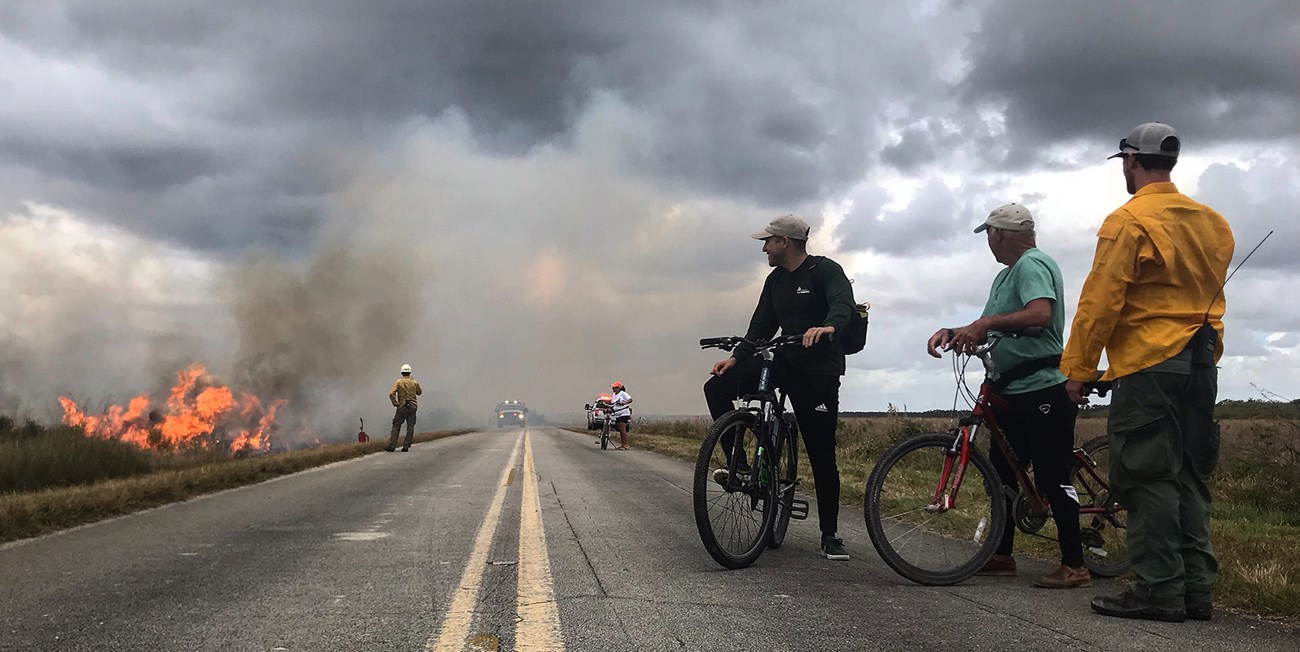
M GUE/NPS
Keep these tips in mind before you leave home and while you're on the trail to have an enjoyable outdoor experience during fire season!
- Before you go, check with public land management agencies for fire restrictions or area closures. Check out current National Park Service alerts.
- Pay attention to signs, do not enter closed areas. Follow directions given by emergency personnel if you are in the area of a wildfire or prescribed fire.
- Prepare a trip plan, let someone else know where you are going, sign in at the trailhead, know your route and be sure to know how to get out! Learn more about trip planning in this guide.
- If you see smoke, fire, or suspicious activities, note the location as best you can and report it to authorities (such as a ranger) or call 911. Do NOT investigate or attempt to contact suspicious people or try to put out a fire by yourself.
- If you see a wildland fire, avoid traveling near it and report its location to authorities (such as a ranger) or call 911.
- Check the forecast before you go. While recreating, watch for sudden changes in the weather or changing weather conditions. For example, if you see or hear a thunderstorm approaching, consider leaving the area.
- Check air quality at your destination or area of travel. Use airnow.gov to check air quality, access a fire and smoke map, and tips on how to be smoke ready. For some parks, you can check live weather and air quality so you can be prepared before you go!

NPS
Most wildfires are human-caused. The best way to stay safe is to prevent wildfires from happening!
- During periods of high fire danger, consider alternatives to campfires, such as a propane campstove. It may be a great opportunity for some fantastic stargazing.
- Practice Leave No Trace principles—pack out cigarette butts and burned materials from your camping area.
- Pack a portable fire extinguisher with you when you travel.
- Build campfires in designated areas like a fire ring. Make sure it is fully extinguished before leaving the area, it should be cold to the touch. Never leave a burning or smoldering campfire unattended. Learn more about campfire safety.
- If you are using a portable stove, make sure the area is clear of grasses and other plants that could easily catch fire. Prevent stoves from tipping and starting a fire.
- Do not drive your car or ATV and park in tall, dry vegetation, such as grass. The hot underside of the vehicle may start a fire.
- If you're going on a hike, here are some other safety items to pack before leaving your car: paper maps, compass, flashlight, cell phone and/or emergency locator device, sun protection, water, and food. Learn more about how to Hike Smart and the 10 Essentials you need.
Last updated: April 15, 2025
Success
Thank you. Your feedback has been received.
Error
alert message

